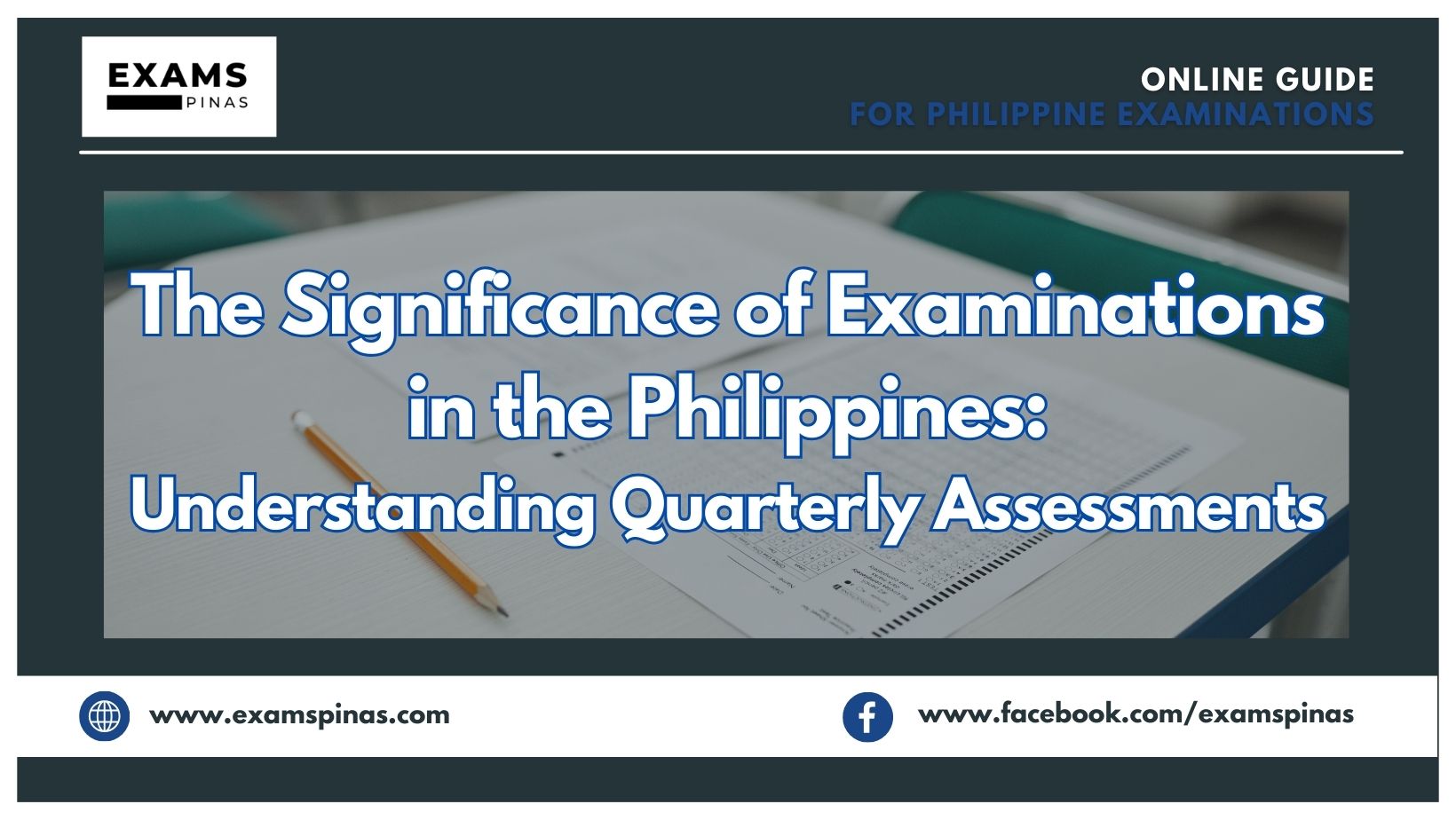Examinations are an integral aspect of the educational system in the Philippines, serving as critical tools for assessing student learning and academic progress. In this blog post, we explore the importance of examinations and delve into the significance of quarterly assessments in the Philippine education landscape.
Understanding the Importance of Examinations
Evaluating Student Learning
Examinations provide educators with a means to evaluate students’ understanding of course materials, concepts, and skills. They assess the depth of comprehension and application of knowledge acquired throughout the learning process.
Monitoring Academic Progress
Examinations serve as benchmarks for monitoring students’ academic progress and performance over time. They enable educators to identify areas of strength and weakness, tailor instructional approaches, and provide targeted support to students as needed.
Promoting Accountability
Examinations promote accountability among students by holding them responsible for their learning outcomes and academic achievements. They encourage students to take ownership of their education and strive for excellence in their academic pursuits.
The Role of Quarterly Examinations
Assessing Learning at Regular Intervals
Quarterly examinations provide opportunities for students to demonstrate their understanding and mastery of course content at regular intervals throughout the academic year. They offer insights into students’ progress and readiness for more advanced concepts and topics.
Reinforcing Learning Objectives
Quarterly examinations reinforce learning objectives and curriculum standards established by educational authorities. They ensure that students are exposed to a comprehensive range of topics and skills aligned with academic requirements and educational goals.
Informing Instructional Decision-Making
The results of quarterly examinations inform instructional decision-making processes, allowing educators to adjust teaching strategies, pacing, and content delivery based on student’s performance and needs. They facilitate data-driven approaches to curriculum planning and student support initiatives.
Best Practices for Conducting Quarterly Examinations
Clear Communication
Educators should communicate expectations, assessment criteria, and examination formats clearly to students before the examination period. Clear communication helps alleviate anxiety and ensures fairness and transparency in the assessment process.
Variety in Assessment Methods
Quarterly examinations should incorporate a variety of assessment methods, including multiple-choice questions, essay prompts, problem-solving tasks, and practical demonstrations. Diverse assessment methods accommodate different learning styles and provide a comprehensive evaluation of student learning.
Timely Feedback
Educators should provide timely and constructive feedback to students following the completion of quarterly examinations. Feedback helps students understand their strengths and areas for improvement, guiding their study efforts and fostering continuous learning and growth.
Embracing the Value of Examinations in Education
In conclusion, examinations play a vital role in the educational journey of students in the Philippines, serving as essential tools for assessing learning, monitoring progress, and promoting accountability. Quarterly examinations, in particular, offer valuable insights into students’ academic development and inform instructional practices. By implementing best practices for conducting examinations and embracing their value in education, educators can empower students to achieve academic success and thrive in their educational endeavors.

